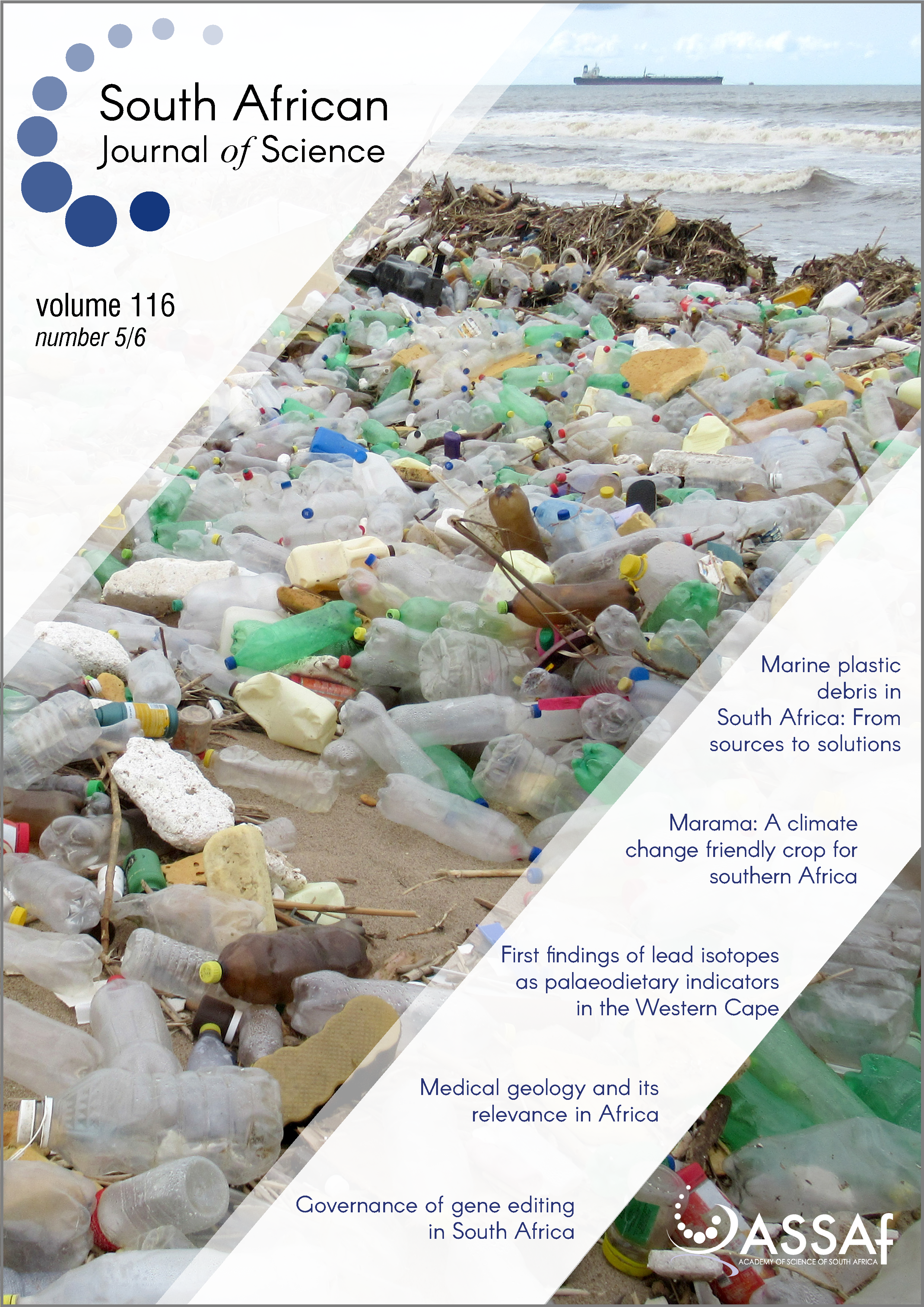Forensic entomology research and application in southern Africa: A scoping review (with corrigendum)
DOI:
https://doi.org/10.17159/sajs.2020/6065Keywords:
forensic science, arthropods, post-mortem interval, stages of decomposition, insect diversityAbstract
The use of forensic entomology is well established in the northern hemisphere, but is still emerging in the southern hemisphere, where most of the current research is not explicitly undertaken in the context of forensics. In this review, we provide an update on the current status of forensic entomology research and its application in relation to estimation of post-mortem interval in various criminal investigations ranging from murder cases, cases of human neglect and the poaching of wildlife in southern Africa, among other issues. A literature search was conducted using Google Scholar, PubMed, Scopus and EBSCOhost databases. The studies reviewed were focused on arthropod diversity during different stages of carcass decomposition, effect of seasons on the abundance and diversity of carrion feeding arthropod species during carcass decomposition, and diurnal and nocturnal oviposition of forensically important insect species during carcass decomposition. It was further observed that arthropod species that established on a decomposing carcass are potentially useful in the estimation of post-mortem interval and determining clues in cases of criminal investigations. The review confirmed the paucity of research in forensic entomology, and its application in southern Africa. Future studies on the research and application of forensic entomology in various criminal investigation scenarios – such as murder cases, human neglect, and wildlife poaching in southern Africa – are therefore needed.
Significance:
- Forensic entomology research and its application is lagging in southern Africa.
- There is seasonal variation in the arthropod species used for estimation of post-mortem intervals in southern Africa.
- Identification of arthropod species diversity in the region has potential for application in forensic investigations.
Additional Files
Published
Issue
Section
License

All articles are published under a Creative Commons Attribution 4.0 International Licence
Copyright is retained by the authors. Readers are welcome to reproduce, share and adapt the content without permission provided the source is attributed.
Disclaimer: The publisher and editors accept no responsibility for statements made by the authors
How to Cite
- Abstract 1402
- PDF 1305
- EPUB 227
- XML 388
- Corrigendum 101












.png)